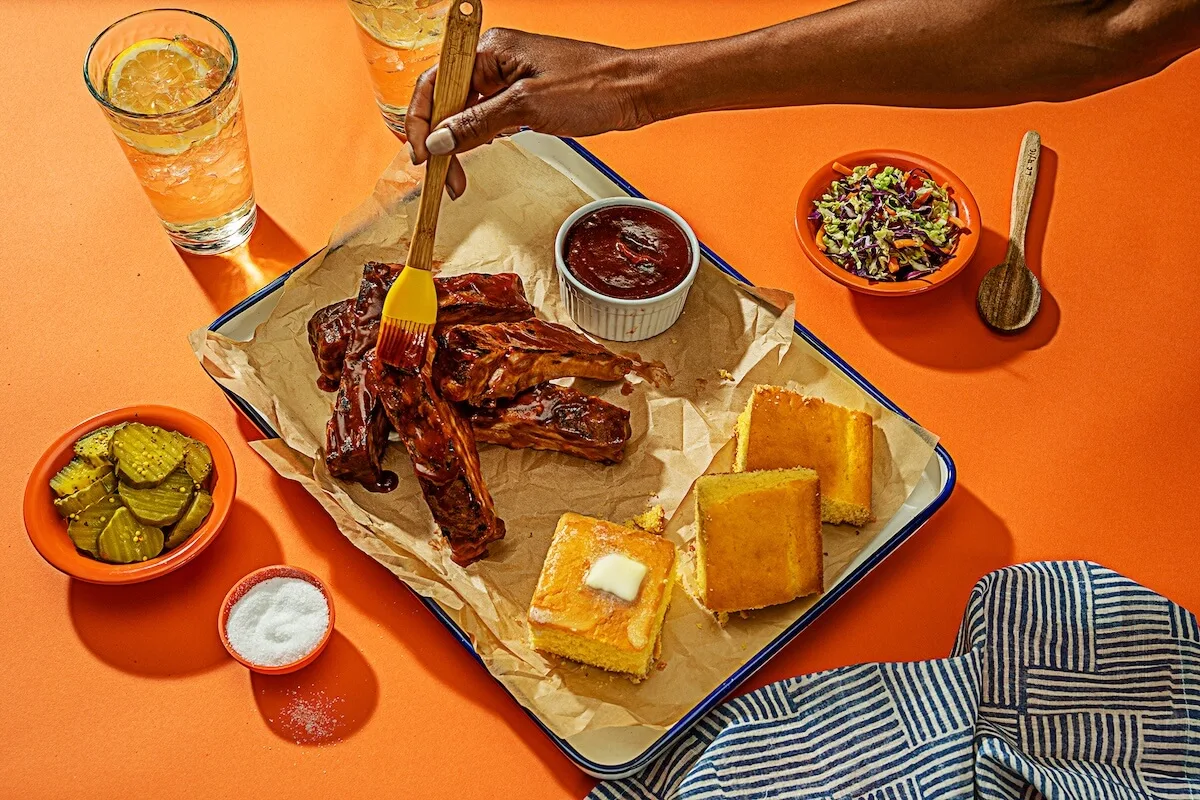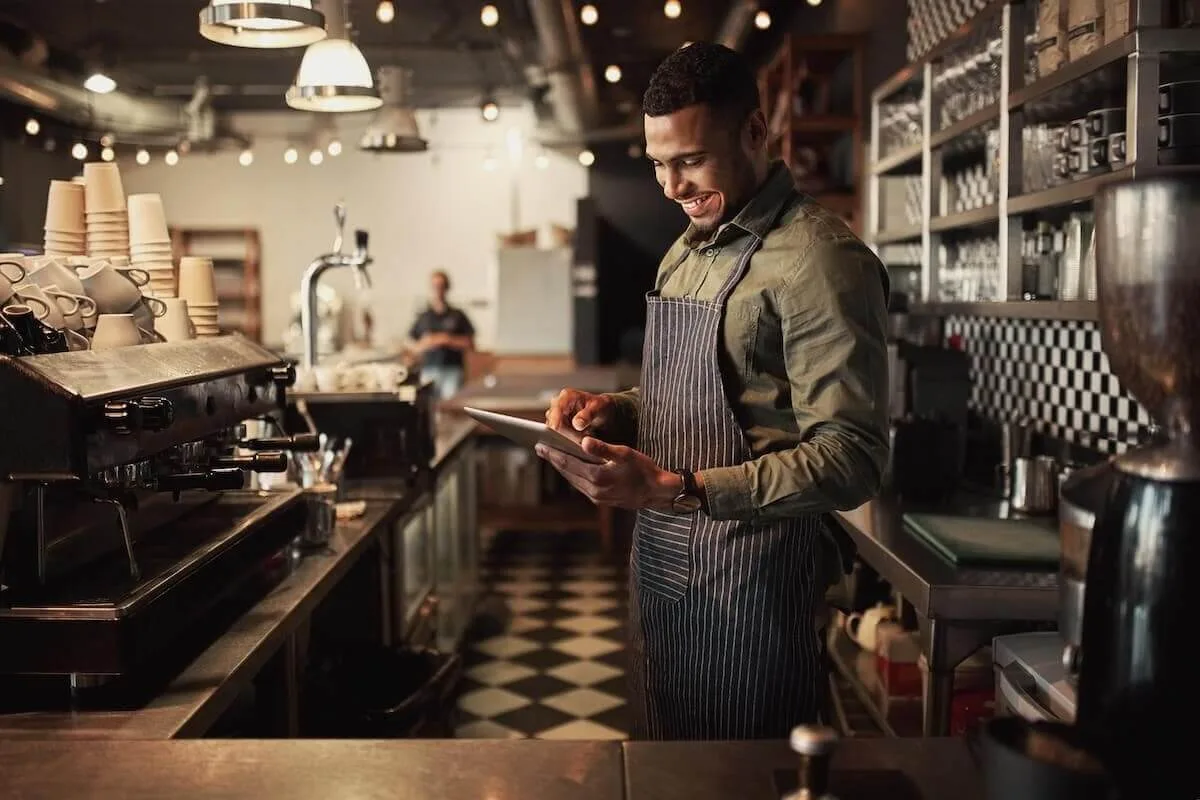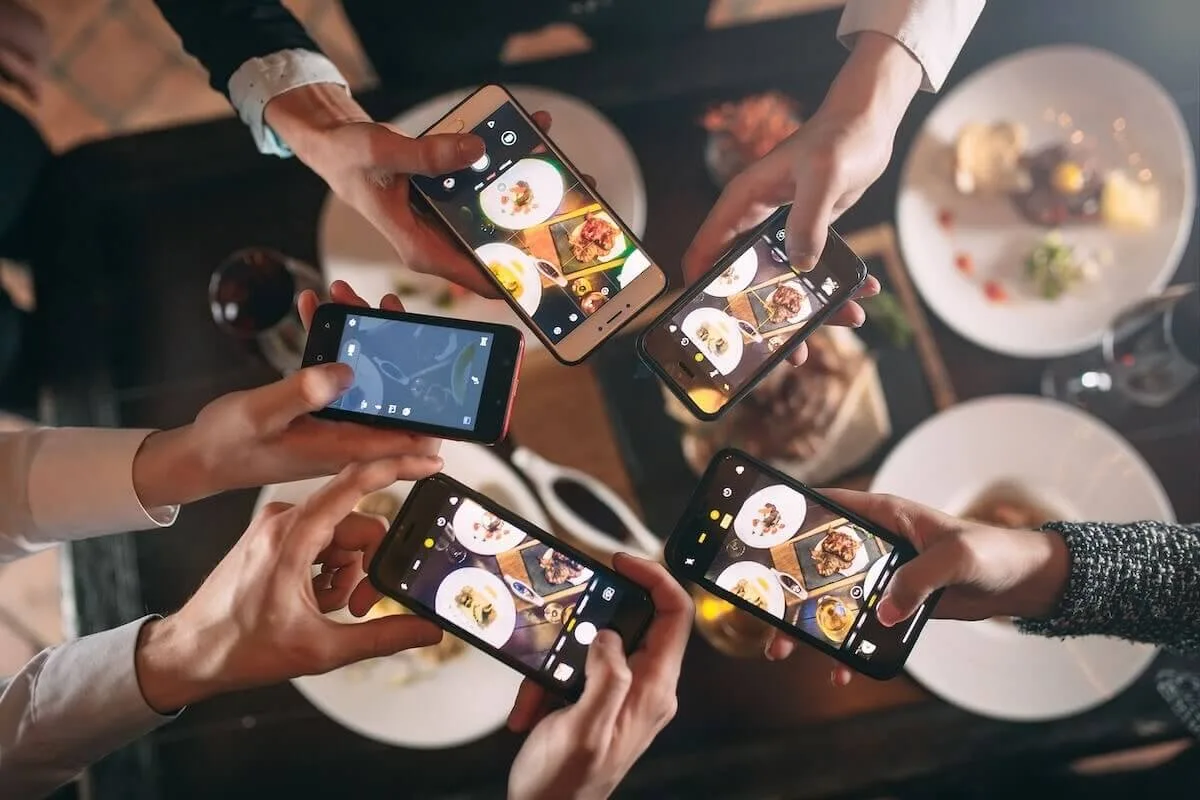7 easy & effective restaurant social media marketing tactics
Skip the article and turn takeaways into action by scheduling a call with our team.
Love it or hate it, social media is here to stay, and it’s one of the best marketing strategies to connect you with new and existing customers. Even though paid advertising exists on social media, you can sell your brand online without paying a cent. Understanding how to best leverage social media platforms attracts new customers and builds serious brand loyalty for your restaurant.
If your restaurant’s social media presence is lacking or you don’t have any restaurant social media marketing whatsoever, don’t worry. In this article, we’ll share our top tips and tricks for solid digital marketing that go way beyond how to choose the cover photo for your Facebook page.
Since things move fast in the social media world, you’ll need to keep up with the latest trends to stay relevant. We’re here to talk about that, too. Let’s start off with some basics.

What social media platforms do you need?
Realistically, you’ll want to have a strong presence on:
- TikTok
- Yelp Connect
Here we’ll explore the nitty gritty of each marketing channel in some detail.
Instagram tips for restaurants
Instagram can be a wonderful tool for any restaurant. It’ll be even easier if you have a strong aesthetic sense and a knack for producing high-quality images and short videos. As a visual-forward platform, Instagram lets potential customers have a deep look into your restaurant and learn a lot about you: What dishes you serve, the ambiance you provide, your brand voice, and more. Setting up Instagram as a business page gives you access to a lot of metrics that help identify your target audience and demographics, one of the key bonuses of having a strong online presence.
The tricky part is consistently producing quality content. We’ll get into that a bit later, since the tricks are true across all platforms. But Instagram especially is important with younger demographics, as 30% of millennials are wary of businesses without much emphasis on Instagram.
Because Instagram is a fast-moving and active platform, you’ll want to post regularly—multiple times a week, if not daily. If that sounds exhausting, don’t overthink it. Plan ahead and discuss ideas with your team, as they may have some suggestions you hadn’t considered yet.
TikTok tips for restaurants
TikTok has recently overtaken Google as the most visited web destination, which should give you an indication of just how popular it is. Despite U.S. government calls to ban it, it’s likely not going anywhere for some time so hopping on it is valuable—especially for attracting younger customers.
As a short video app for short attention spans and potential virality, TikTok benefits from regular uploads—at least daily if not more. You can let employees share videos of behind-the-scenes content, chefs preparing food, daily specials, full dining rooms, or more—anything that’s fun and eye-catching. Using a rapid-fire method with TikTok is valuable, since you never know what’s going to go viral. Throw some wet spaghetti against the wall and see what sticks and gets people to stop scrolling.
Facebook tips for restaurants
Facebook is still around and still has a large presence, but its demographics have shifted towards the older crowd in the U.S. Your Facebook page doesn’t have to be as active as your Instagram or TikTok pages since it simply doesn’t move as fast, so weekly Facebook posts are probably adequate. Creating your business page can allow you to run Facebook ads with a target demographic and, crucially, establish a “home base” page with your location, menu, contact details, a link to your restaurant website, and a catalog of images.
Yelp Connect tips for restaurants
Your Yelp Business Page can link with Yelp Connect, a feature that allows you to share updates and custom CTAs to your Yelp page. You can post a photo or video with a headline and caption and—critically—a call to action button that invites customers to book a reservation, for example. When paired with your Yelp Business Page and Yelp Guest Manager, you’re looking at a powerhouse for foodies. Customers will then see your Yelp Connect posts and voila, you’ll have way more potential customers.
If you use Yelp Connect, you’re opting for a marketing tool that connects with an average of 92 million unique mobile users per month—users that are actually looking for a place to eat.
By using Yelp Connect, you can structure your restaurant’s Yelp page to feel like the social media experience your customer base knows. You can share updates about events at your restaurant or tempting new menu specials. Check your analytics later to see what converts. With that information, you can then optimize your content for future posts, giving people who are already looking for a good restaurant experience exactly what they want.
7 savvy restaurant social media marketing tactics
Social media platforms thrive off shared information, and nothing makes them happier than social media accounts sharing new and exciting content. They know social media users want to see content that stands out and gets the point across clearly. Shareable content is a key element of the social media dynamic—and it pays off in exposure and conversions for those who do it well.
The better you get at creating and sharing quality user-generated content, the better you’ll be at stopping scrollers in their tracks—and showing them why your restaurant is a truly unique and worthwhile experience. Here are seven tactics you can use to optimize your restaurant social media marketing.
1. Track your metrics

When starting out with social media marketing, be careful not to get bogged down with so-called “vanity metrics.” Of course, more followers and likes look great to both our followers and to us. But lots of influencers and other social media accounts like to fake it ‘til they make it by buying followers and even likes.
What really matters in good social media management are the metrics that we can see on the back end. Check your analytics to see how many people are viewing your posts and, most importantly, how often you convert (when people actually click on the link you are promoting).
For instance, with Instagram, you can create Instagrammable moments with your restaurant décor or leverage Instagram Stories and Reels to launch a specific restaurant promotion. But you want to see who follows your call to action after enjoying your content. Watch your analytics on Instagram as well as your website’s traffic after posts to see if your content is working.
Or, if you’re using TikTok, be consistent with your posting schedule and watch your analytics for content that generates clicks. TikTok pages grow by being useful and searchable. Create content based on what your customer base searches for. Restaurants have a leg up with content like explaining the background of their cuisine or how you make a favorite dish.
A critical takeaway here is to modify and experiment with your content. When you find something that works, keep at it, hoping that the algorithm helps you along the way. Consider reposts of really good content, or use effective campaigns to inform your content calendar. To really kill it online, you need a social media strategy.
2. Stay consistent
You’ll want to keep your restaurant branding consistent across all your restaurant’s social media accounts. That means using the same handle, the same profile picture, and the same color scheme on all social media sites. Maintaining a consistent aesthetic theme as well can reinforce your restaurant brand and drive conversions while building your online presence.
Restaurant owners may not be social media gurus, so you can hire someone who’s an expert at restaurant social media strategy—or, alternatively, look for talent already in your restaurant. There’s a decent chance one of your younger employees has latent social media management talent that can be turned professional with a bit of extra motivation. Ask around with your staff members to see who is the most clued in on current social media trends and offer them the extra work with extra compensation. Putting the social platforms in one or two people’s hands will help keep things consistent.
3. Stand out

A good restaurant social media post should be immediately eye-catching, tell the customer something they didn’t know, and have a call to action. For example, a short video on Instagram Reels or TikTok can show your weekly or daily special being prepared or delivered to a table, with a caption describing what it is and how much it costs. Post content about daily or weekly events, or share beautiful photos or videos of your establishment in full swing.
It’s wise to have a schedule for each week knowing what you’re going to post and when so you’re not just shooting from the hip. Monthly reviews of metrics and conversions can help see where you can improve. If you find that you want to push online ordering more, for example, you can schedule more eye-catching posts that encourage customers to order online for takeout or delivery.
4. Get interactive

One of the most powerful aspects of modern social media is that it’s interactive. That’s the whole point, really. So, when customers comment on your posts, make sure to at minimum react, and better yet to respond to comments of any variety. If your social media marketing manager has a witty or unique voice behind your social media account, that’s all the better.
Sharing or reposting customer interactions or positive reviews will help those customers feel special and potentially turn them into regulars—the lifeblood of the restaurant industry. Sharing user-generated content is a great way to build your brand without having to do your own heavy lifting.
5. Get personal
Letting your customers know who’s who at your restaurant can make for a homey, down-to-earth feel that’s hard to beat in what feels to many like an anonymous age. Give customers a behind-the-scenes look into your restaurant by sharing quick videos on Instagram or TikTok with each staff member introducing themselves, working their positions, or having fun together. The personal touch will help potential customers feel connected to you beyond just your brand.
Man-on-the-street style interviews are really popular right now too. Have someone walk around and ask staff a set question, like their food service hot takes, and compile the funniest responses. If viewers think your staff is fun, they’re inclined to want to pay a visit.
You don’t just have to introduce staff and management, too. You can make videos with regular customers (with their consent, of course), describe your restaurant’s story and how you got to where you are, what you want to see happen in the future, and anything positive that’s been happening lately.
6. Find the perfect influencer

Restaurant social media marketing and influencers go together like peas and carrots. Influencers with a lot of followers are ideal candidates to promote your restaurant with social media content. They have the reach that will take a new or struggling profile months or even years to achieve. Having an influencer share one post about your restaurant could equate to dozens or even hundreds of positive online reviews.
Reaching out to a local influencer to help build brand awareness is quite simple:
- Search for trending hashtags synonymous with your brand and set the location to your area.
- Slide into their DMs.
- Show them your social media profiles and tell them all there is to know about your restaurant.
- Offer them a free meal and drinks on a night that is convenient for them.
For your restaurant’s top dish to end up in the Instagram stories of the rich and famous, you may need to offer more than a free meal. Influencer marketing can be very expensive depending on the type of content and the number of followers the influencer has. So, if you just want to share new menu items with your local area, reach out to micro or mid-tier influencers or bloggers to start out, and it may just cost you the price of a meal.
7. Start a giveaway campaign

Promoting giveaways is a great marketing plan to get new customers on board. It takes advantage of the free advertising that social media channels offer us with user-generated content. A simple social media contest Instagram post will cost you nothing except the prize itself.
A photo contest is a valuable example of social media marketing strategy. Here are three easy steps to running a giveaway campaign on your restaurant’s Instagram account without needing to pay social media influencers:
- Post a mouthwatering photo of a new dish on your menu that you want to promote, announce your contest and whatever it is you’re giving away: gift cards, merchandise, free meals, bottles of wine or champagne, etc. The larger the ask and the larger the competition, the larger the gift should be.
- Ask people to tag a friend, share a photo, story, comment, or anything else to drive visibility and enter that into a prize pool.
- Tell them to tag your restaurant and include a unique hashtag you’ve come up with that relates to the food and giveaway.
With this tactic, you’re essentially convincing your customers to advertise for you (for free!) with a virtual word-of-mouth effect that could reach thousands of people. You can then use the photos for future marketing opportunities. Remember to promote your giveaway in your restaurant, too, for people that may not follow you on their socials.
Social media marketing is a must-have in your digital marketing toolkit
Getting your restaurant social media marketing in order can be challenging but is easier than you may think and an absolute must if you want to keep up with your competition. The fact that you can leverage these free-to-use platforms to expand your reach exponentially makes ignoring social media difficult. Once you get in the swing of things, your social media presence can take your business to the next level.
Implementing new restaurant social media marketing techniques could cause your front-of-house staff to become overwhelmed with a busier-than-usual restaurant. Take charge of your FOH management and improve your customer’s experience with Yelp Guest Manager. This software supports your team by handling reservations and waitlists, allowing customers to check themselves in, and syncing with third-party delivery apps and POS systems.
Reach out to us and get a demo. Restaurants that use Guest Manager paired with Yelp Ads experience 87% more traffic on their Yelp business page.